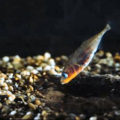
Most of us feel anguish over the loss of endangered species like the panda or the polar bear. But what happens to the parasites that are hosted by such animals? And although most people would side with the panda over the parasite, which group should we be more concerned about?
In a new study published in Proceedings of the Royal Society B, North Carolina State University biologist Rob Dunn examines the concept of coextinction; or the domino effect of extinctions caused by species loss. Mathematical models suggest that coextinctions due to the actions of humans are very common, the paper asserts. Yet, counterintuitively, there have been few reported cases of coextinction in scientific literature.
“What we know about coextinctions presents a kind of paradox. The models suggest thousands of coextinctions have already occurred and that hundreds of thousands may be on the horizon. Yet we have observed few such events,” Dunn said. He cites the example that each fig species tends to be pollinated by a single fig wasp such that the loss of one should result in the loss of the other. “We’re not sure if all of these coextinctions are happening and not being tracked, or if parasites and mutualist species are better able to switch partners than we give them credit for, or something in between. Maybe some of the specialized relationships – like between the figs and fig wasps – aren’t so specialized.”
This numbers game alone strongly suggests that coextinctions are more important than the original host extinctions themselves. The paper also examines other costs of coextinction – including the losses of biological diversity, unique species traits and what we can learn about evolutionary history. But, regardless of whether we care at all about the loss of such species and their traits and roles, there is something even more worrying about the consequences of coextinction.
“There is a distinct possibility that declines in host species could drive parasite species to switch onto alternative hosts, which in turn could escalate the rate of emerging pathogens and parasites both for humans and our domesticated animals and plants,” Dunn contends. “Put simply, when a host becomes rare, its parasites and mutualists have two choices: jump ship to another host or go extinct. Either situation is a problem.”
Dunn noted that the regions where new human diseases, such as bird flu, are emerging coincide with the regions where the most mammal and bird species are endangered. “We have long talked about the negative consequences of the endangerment of the species we love,” he says, “but getting left with their parasites is a consequence no one bargained for.”
Related:
Boffin Ponders Cultural Manipulation By Cat Parasite
Parasites A Ticking Bomb For Humans
Warmer World Will Be Sickly
Threat From Plummeting Biodiversity Qualified









Comments are closed.